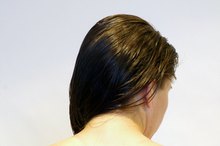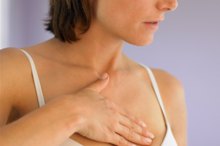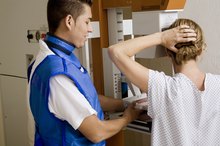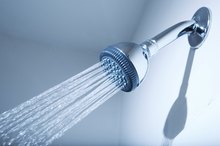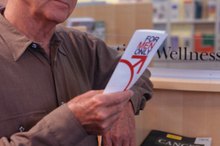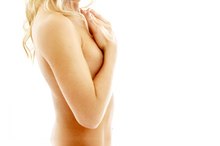Vitamin E for Breast Pain
Breast pain is a common ailment that many women face -- especially in women who are having monthly menstrual cycles. Breast pain can last for days, weeks or months. If you experience persistent breast pain, it is generally a good idea to make an appointment with your doctor. While not a proven treatment method for breast pain, vitamin E may be able to help alleviate your breast pain.
Causes of Breast Pain
There are a number of different reasons why you may experience breast pain. FamilyDoctor.org indicates that breast pain is most common in women during their childbearing years and is rarely seen in older women. Water retention and hormonal changes that occur during your period may lead to breast pain. Pregnancy, injury, infection, breastfeeding and breast cancer can also cause you to experience pain in your breasts.
Traditional Treatment of Breast Pain
The Breasts & Shingles
Learn More
A physical examination as well as a medical history can help to determine the cause of your breast pain. For younger women -- under the age of 35 without any lumps in your breasts -- your doctor may decide against further testing. If your doctor finds a lump or if you are other the age of 35, additional testing, including mammograms, sonograms or a biopsy, may be ordered. Treatment for breast pain may include wearing a supportive bra, over-the-counter pain medication or prescription pain medication for severe pain. Your doctor may also recommend avoiding salt and caffeine, taking vitamin E, taking a vitamin B-6 supplement or the use of a diuretic to help reduce water retention.
Vitamin E and Breast Pain
Vitamin E is fat-soluble vitamin that serves as an antioxidant. Antioxidant properties can help protect your body's tissues, including breast tissues, from damage that occurs as the results of free radicals. Vitamin E can also help reduce inflammation that cause pain and tenderness in your breasts. This vitamin allows your body to secrete cytokines, which help to repair damaged or injured tissues. Vitamin E may also be able to help reduce the amount of time you have breast pain, since vitamin E is known to help speed up the healing process. Two studies conducted in the 1980s indicated that vitamin E can help treat benign breast conditions, such as cystic breast diseases that may lead to breast pain. A 1980 study in "The Journal of the American Medical Association," indicated that vitamin E was able to help reduce pain and tenderness associated with cystic breast disease. In a 1985 double-blind study published in the "Surgery," 75 women with benign breast disease were treated with vitamin E or placebo. The 37 women who received vitamin E had a significant decrease in premenstrual breast pain.
Vitamin E Dosage
What Are the Treatments for Breast Ligament Pain?
Learn More
To gain the antioxidant and anti-inflammatory benefits of vitamin E, follow the recommended dietary allowances, or RDAs. For females between the ages of 9 and 13 years old, the RDA of vitamin E is 11 mg. For adult women over the age of 14 the RDA of vitamin E is 15 mg. For women over the age of 14 who are lactating, 19 mg is recommended daily. Sources of vitamin E include olive oil, corn, soy, wheat germ, kiwi, mango, tomato, peanuts, spinach, almonds, peanuts and broccoli. Vitamin E can also be supplemented at the recommendation of your doctor.
Related Articles
References
- Office of Dietary Supplements: Vitamin E
- FamilyDoctor.org: Breast Pain in Women
- Journal of the American Medical Association: Vitamin E Relieves Most Cystic Breast Disease, May Ulter Lipids, Hormones; Elizabeth Rasche Gonzalez; 1980
- National Institutes of Health: Vitamin E and Benign Breast "Disease": Ernster VL, Goodson, WH, et.Al.; Apr. 1985
Writer Bio
Michelle Zehr started writing professionally in 2009. She has written on health, fitness, fashion, interior design, home decorating,sports and finance for several websites. Zehr possesses a Bachelor of Arts in communication from the University of Pittsburgh, a Master of Arts in professional writing from Chatham University and a graduate certificate in health promotion from California University of Pennsylvania.
